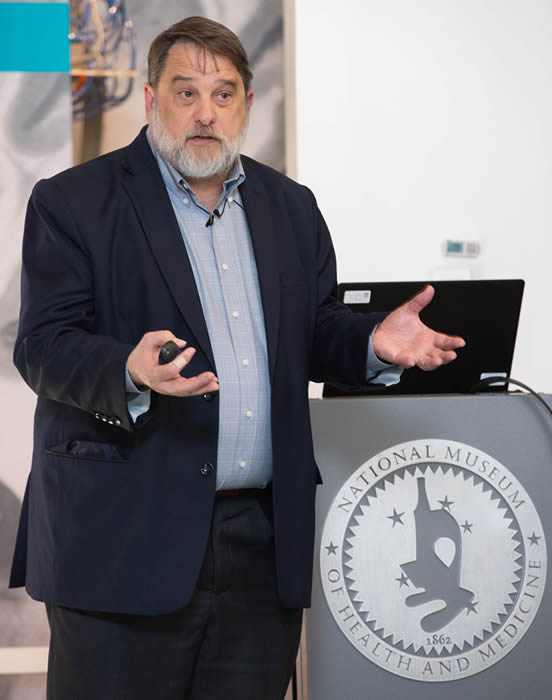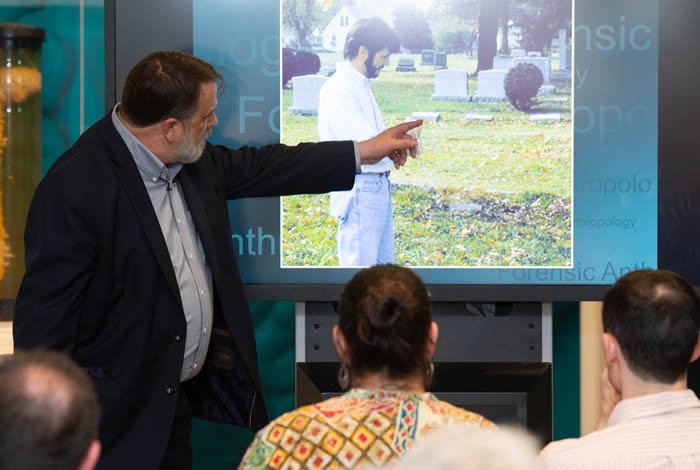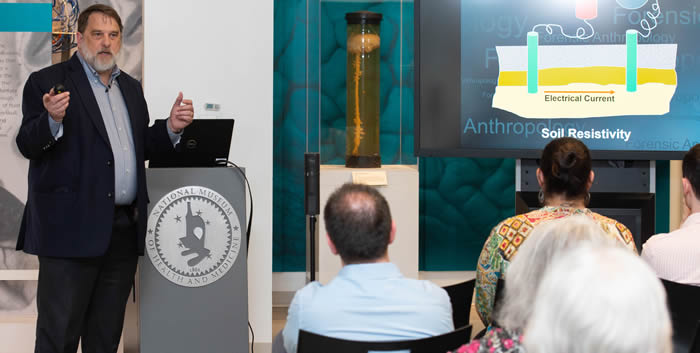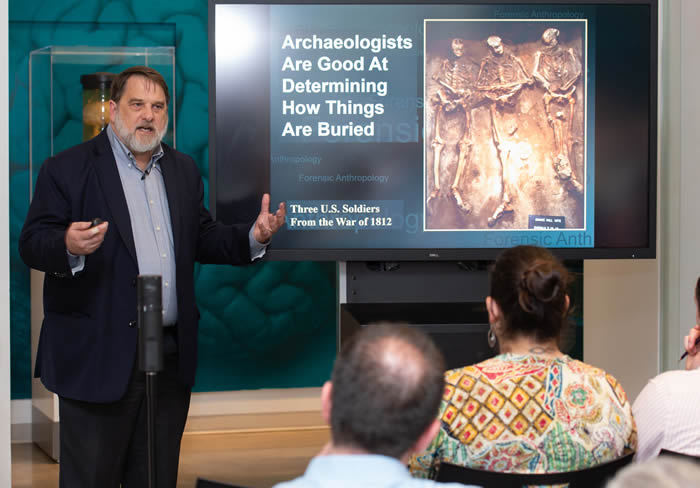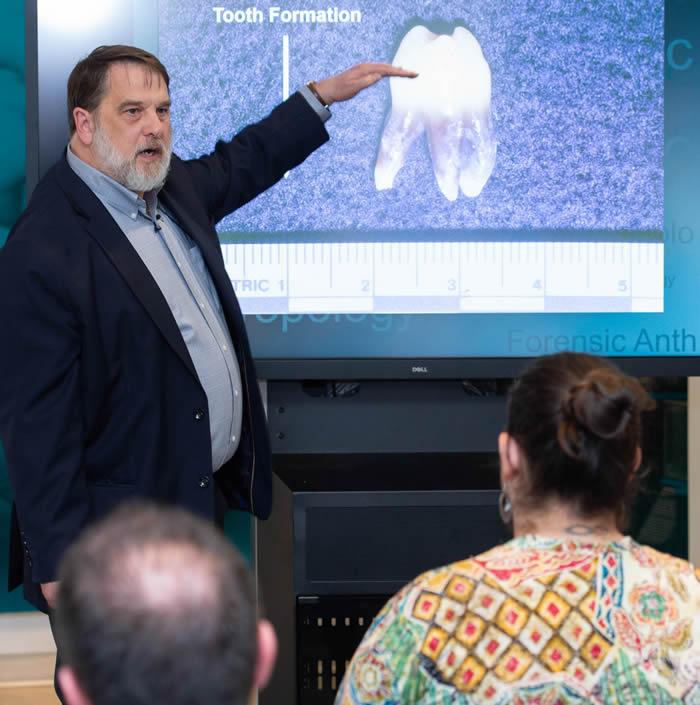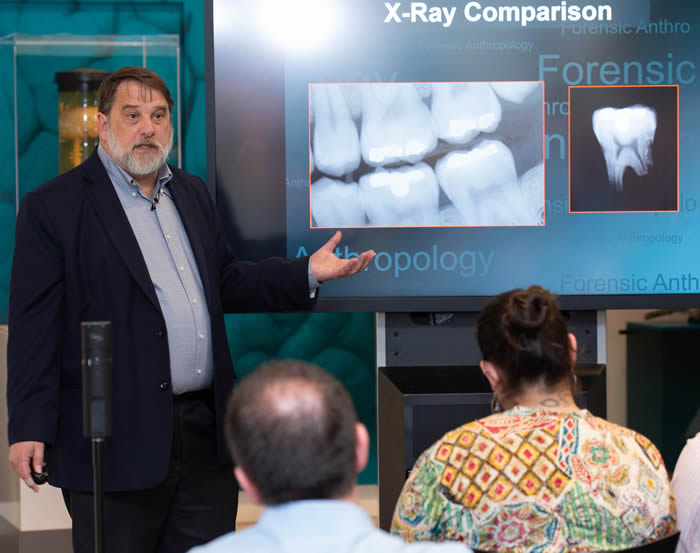Locate, Recover, Identify: Forensic Anthropologist Accounts for Missing Service Members
By Jacqueline Gase
NMHM Public Affairs Coordinator
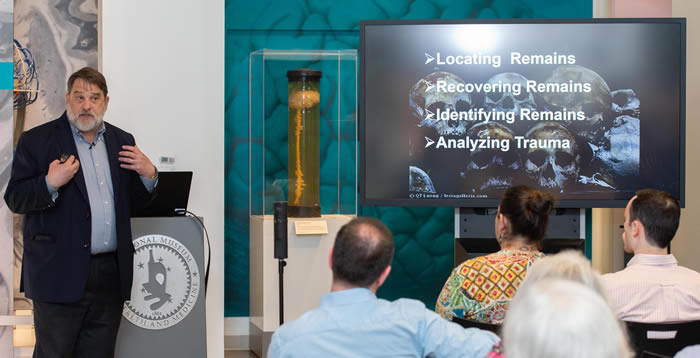
Dr. Thomas Holland, director of partnerships and innovations at the Defense POW/MIA Accounting Agency, speaks about the process of identifying missing service personnel, during the April 23, 2019 Medical Museum Science Café titled "Finding Our Lost" at the National Museum of Health and Medicine in Silver Spring, Maryland. (Department of Defense photo by Matthew Breitbart)
The audience at the National Museum of Health and Medicine experienced forensic anthropology during the April 23, 2019, Medical Museum Science Café titled "Finding Our Lost." Dr. Thomas Holland, director of partnerships and innovations for the Defense POW/MIA Accounting Agency (DPAA), led museum visitors through the processes of recovering and identifying the remains of American war dead.
Focusing on past conflicts, including World War II, the Korean War, Vietnam War, and Cold War, the DPAA team works to locate, recover, and identify the remains of more than 82,000 unaccounted service members. "Currently we are identifying one soldier, airman, sailor, marine, a day. Unless it happens in your hometown you don't particularly read about it, but we are identifying over 200 a year," said Holland.
Emphasizing the responsibilities of a forensic anthropologist, Holland explained that locating war dead requires exploration of sites with technology (such as ground-penetrating radar), witness interviews, and by walking the site to note changes, like soil staining. Showing a photograph of a Civil War burial site, Holland pointed out the darkened soil where the organic material from a body made a stain. Even after hundreds of years, soil stains persist in helping DPAA locate remains.
Once they have found the remains, excavation and hard tissue (bone) trauma analysis begins. Holland described the six to seven major lines of evidence used to make an identification: "Every identification is the result of two or more lines of evidence." Starting with the number of unaccounted service members in an area, DPAA looks at the historical record, the archaeology (how the remains were buried), material evidence (clothing and accessories), the biological profile (age, race, sex, and stature), odontology, mitochondrial DNA, and in some cases, isotopic analysis. DPAA makes an identification based on the exclusion of service members who don't align with the evidence.
Presenting a case study, Holland showed that when all the lines of evidence overlap an identification can be made. In one case study, Holland presented analysis of two sets of remains from the Korean War. The historical record, archaeology, material evidence and biological profile narrowed the subset to six people. Using dental records, the dentist eliminated five people, leaving one remaining. With the dental records and anthropology confirmed, DPAA found the service member's sister and matched mitochondrial DNA for a complete identification.
Holland ended the presentation by discussing his work developing partnerships to help find American war dead. When asked by an audience member for a take-home message, Holland said, "Don't forget they are people. Sometimes we can get caught up in the analytics…but they are people."
"Since the Civil War, the American military has gone to great lengths to identify and return missing and deceased service members to their families. The museum shares the history of these efforts and the science of human identification through an exhibition as well as a 'Forensics Mystery' workshop for middle school students that explores the lines of evidence used to make an identification," said Andrea Schierkolk, NMHM public programs manager.
NMHM's public programs provide forums for informal learning that connect the mission of the Department of Defense museum with the public. NMHM was founded as the Army Medical Museum in 1862 and is a division of the Defense Health Agency Research and Development Directorate. For more information about upcoming events, call (301) 319-3303 or visit https://www.medicalmuseum.mil.
